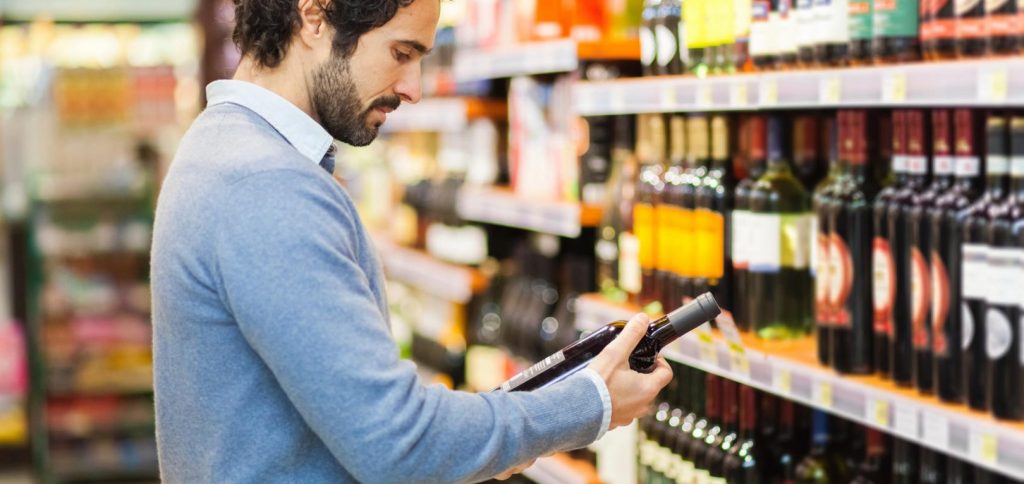Themed Week Flexibility: When it comes to wine, how much brand do consumers demand?

In many cases, consumers decide whether or not to purchase a product based on the brand. But that does not completely apply to the world of wine. That is because many consumers are not familiar with wine brands. The decision to buy is often based on other criteria.
Almost all studies on consumer behavior come to the same conclusion: Very few consumers have a deep knowledge of wine. Sure, plenty of people are familiar with terms like Riesling, Pinot Noir or Cabernet Sauvignon. But most consumers don’t know that Barolo is a wine village, Barbera is a grape variety, Bordeaux a city as well as a region of origin and Palatinate is a German wine-growing region. And even fewer know the difference between specific wine names and wine brands. And that despite the fact that Germany is the fourth largest wine market in the world.
How flexible is the classic wine consumer?
So what is a “classic” wine consumer who also places demands on wine when it comes to brand recognition actually like? Consumers drink more wine starting at about the age of 45. Consumers include equal percentages of men and women who tend to be better educated and have higher average incomes. Consumption varies greatly between urban and rural communities and in various regions. In Germany’s southern states and, above all, in wine regions themselves, people consume considerably more wine than in the flatlands of northern and eastern Germany.
The definition of brand is different with wine
For these target groups, which market researchers refer to as intense consumers, some wines really do have brand character. However, the term “brand” is something that these consumers interpret flexibly. In the classic sense, a brand is a consumer good that is available nationwide for a uniform price and is sold with the support of intense marketing measures. That does not apply to wine. In the eyes of experienced consumers, big names in the world of wine such as Italy’s star winemakers Angelo Gaja, Marchese Antinori and Marchese Frescobaldi or Germany’s well-known winegrowing estate Robert Weil definitely have brand character. But most consumers are not familiar with the names or the wines. Even people who don’t wear Adidas sneakers are familiar with the brand. But things are entirely different with wine.
Wine names are very diverse
It is difficult to find another product where the price difference between a simple and super premium product is larger. Some premium wines cost a thousand times more than a simple wine. The legendary Rommanée Conti, a bottle of which can cost 13,000 euros, compared to a simple Burgundy, which costs less than ten euros, is a prime example. Still, many smaller wines have a name or, if you prefer, a brand, and it can be many things: a region of origin such as Champagne, Rhone, Burgundy, Rioja, Chianti, Valpolicella or Brunello di Montalcino. There are also various grape varieties that appear in large letters as the primary component of the label, making them comparable to a brand. The grape variety Dornfelder or even Riesling, which is popular in Germany, are good examples. And then there are simple fantasy brands such as the ones that the winegrowing estate Markus Schneider in the Palatinate, one of the pioneers of modern wine marketing, launched years ago. Its wines are named “Black Print,” “Ursprung,” “Kaitui” and “Holy Moly.” Since then, plenty of new names have appeared in the world of wine. Names such as “Fat Boy Zinfandel” or others that border on poor taste such as “Pornfelder,” a composite of the components that the blend is made from, i.e. Portuguese and Dornfelder.
This year’s drinktec, which for the first time every is being held in conjunction with SIMEI, will give visitors an overview of all the new and well-known brands. The SIMEI Sensory Bar will allow visitors to taste various wines and familiarize themselves with the various wine brands. And those who are interested in how to strengthen the reputation of wine brands using targeted, effective marketing will find plenty of information and dialog opportunities at the Innovation Flow Lounge. Located in Hall B1, among other things it is a meeting place for all marketing experts in the beverage industry.
From tall tales to wine knowledge
If consumers want to find their way around the world of wine, they must be extremely flexible. A brand can be many things. For some consumers, even the place that you make a purchase can influence the character of a brand. That is why plenty of consumers purchase their wines at food discounters such as Lidl or Aldi: Because it is part of their product line and can always be found at the same place. Wine also calls for flexibility.
Innovation Flow Lounge is supported by:
- Döhler
- FoodBev Media
- KHS
- Sahm GmbH
